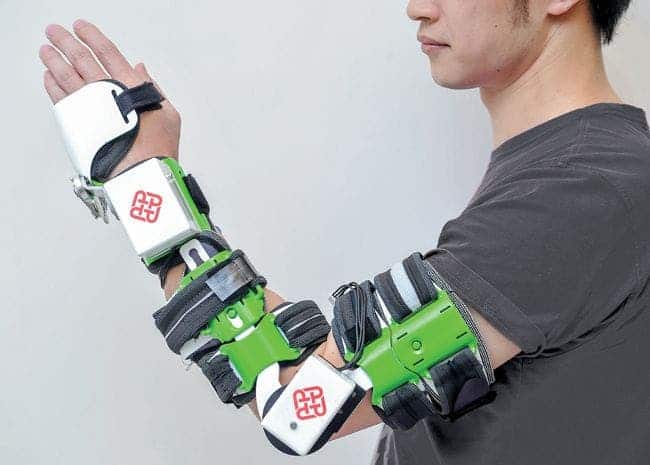Hong Kong PolyU has designed a new FES (functional electrical stimulation) – robot hybrid that promises to ease recovery of mobility in stroke victims.
Cerebrovascular accidents (more commonly known as strokes) take place when poor blood flow in a certain area of the brain causes cell death. It is the third leading cause of death in the United States, with approximately 795,000 recorded cases each year, claiming the lives of more than 140.000 people each year in the U.S alone, according to the U.S. Center for Disease Control and Prevention. Common symptoms of stroke include hemiparesis (in more than 80% of stroke survivors) or a total inability to move or feel on one side of the body. After such an event, regular exercise is needed for the patient to recover motor function in the affected areas of the body.
Dubbed the “Rehab Sleeve”, the device was designed by Dr Hu Xiaoling at the Hong Kong based PolyU’s Interdisciplinary Division of Biomedical Engineering. The team was supported by the Institute of Textiles and Clothing, Industrial Center and other organizations. It combines pressure and moisture management to allow for comfortable long-term use in patients with functional electric stimulation, a technique that uses electrical currents to activate nerve endings controlling extremities affected by paralysis. It interprets the user’s motions as electrical signals that can be used to control a computer, allowing for a combination of training tasks with interactive applications and games.
With a modular design and equipped with a bracing system, the Rehab Sleeve is comfortable to wear and allows for a lot of flexibility in usage: the various modules can be used at once or separately to maximize training efficiency. The device’s effectiveness in training has been evaluated in over 30 patients for three to six months, with preliminary results showing that compared to conventional training it can better accelerate the recovery of patients’ upper-limb functionality. Patients usually require 20 sessions of training using the Rehab Sleeve.










